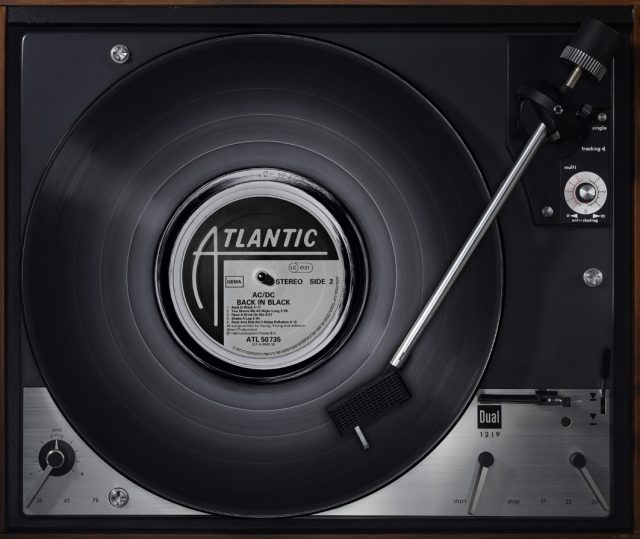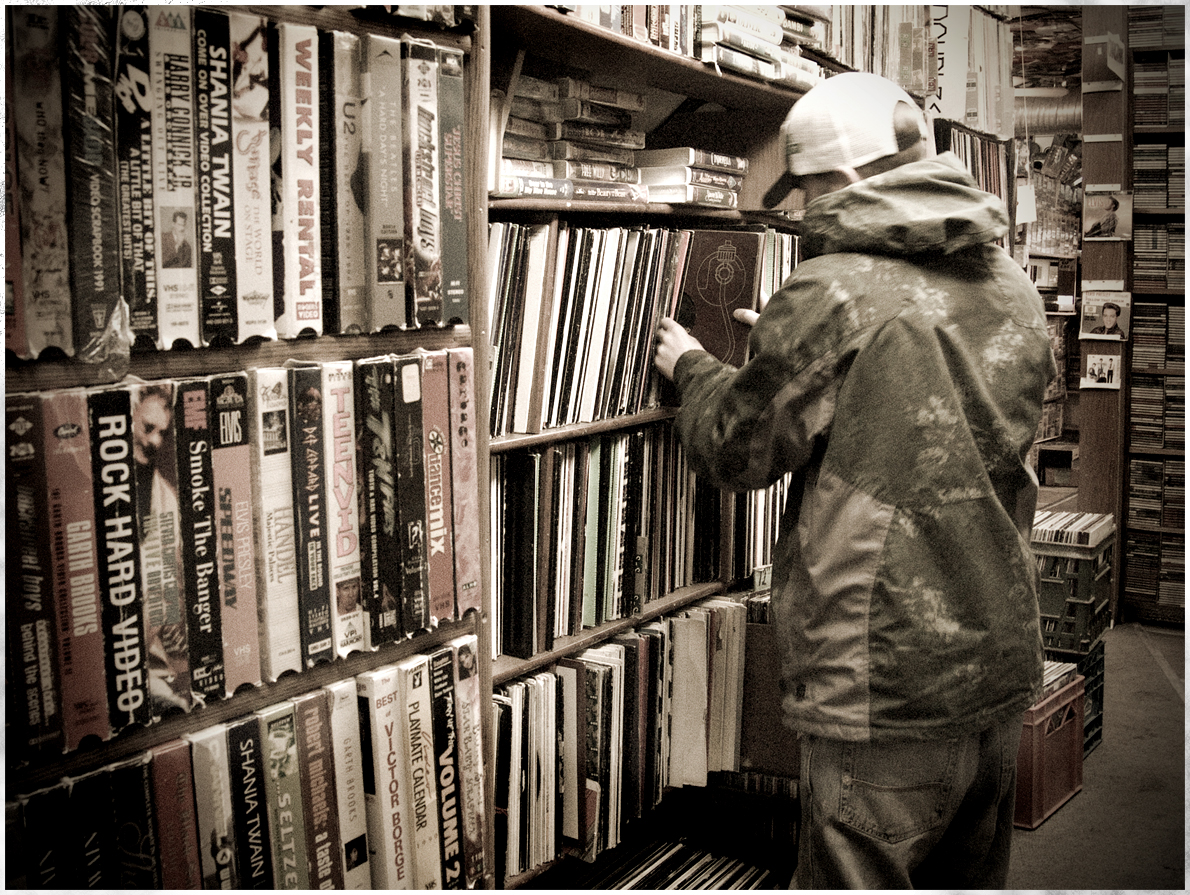
In 2010, a small factory in Cleveland started pressing vinyl records. Why does that matter? Because Gotta Groove was the first new vinyl pressing facility to come out of the United States in a long, long time.
…Somehow, a group of smart, experienced people got together and decided there was money to be made pressing vinyl. What’s more, they got other people to agree and give them some money. Apparently, records are good business again. So, how did we get here?
First,a quick history lesson. Records – wax and then vinyl – were the dominant medium in the recording industry for nearly a century. Record companies were blissfully cranking out 33’s, 45’s and 78’s until 1988, when, for the first time, compact discs out sold vinyl records. Vinyl never recovered. Compact discs are easier to make, easier to handle, and easier to take for a walk. You can store more music, at a higher quality, for a better price, on CD than on vinyl. Ten short years later, compact discs were squashed by digital music. Digital music is audio converted to ones and zeroes. The advent of Mp3, an audio encoding format, and the rapid growth of peer-to peer music sharing networks, made free music a hard reality. Anyone could turn on their desk top and get whatever music they wanted instantly. Physical music distribution became a liability. Sales dropped, then plummeted as the industry stumbled around, waging war on their old customers.
New distribution channels, digital and outside commercial control, were the only sources of growth in a stagnating market. Music you could put your hands on was dead.
But then something unexpected happened. A revival. While digitalformats are convenient, and instantaneous, the sound quality is poor, and they hold little collectible cachet. Digital cannot replace the personal connection; having a piece of your band that is yours, and yours alone. A response formed in that intersection of youth and DJ culture. Artists experimented with turntables and records and transformed them into new art forms. Beat making
(sample based music production) and turntablism, (using turntables as an instrument to create new compositions), became the new underground. Video sharing on YouTube meant you could watch the best battles and learn the newest tricks, at home, with your friends. Records started to represent something. They were a tangible connection to your heroes. Sample based musicians creating music from dusty gems found on old vinyl gave records a whole new appeal. Record collecting was a movement. All of a sudden, vinyl had soul. And new vinyl did too.
A box of 7-inch singles can be sold at a live show. Those same singles can then be sent to everyone who contributes to the newest recording as a way of saying thank you, and again, tying fans and your artists closer together.
Most new LP’s are released at double or triple the price of their digital counterparts. And yet, vinyl sales have risen
steadily over the last ten years. Audiophiles will tell you they
prefer vinyl because of its warmer, vacuum-tube sound. Dig a little deeper, though, and you’ll find a surprising lack of detail on the specifics of the vinyl sound. Most can’t tell you exactly why it sounds so good. No doubt, the dedication it takes to acquire both the records and the equipment to enjoy them, plays a big, big part. But there is also a value-add element to new release LP’s. Artists can package their releases in limited edition runs and include exclusive studio footage, photographs, lyrics and art. As a fan, you get that warm vinyl sound, but you also get a very rare piece of your favourite band.
Sample based musicians creating music from dusty gems found on old vinyl gave records a whole new appeal. Record collecting was a movement. All of a sudden, vinyl had soul. And new vinyl did too.
In a media-saturated world where all information is instantly transferable, having unreleased material, in your hand, is differentiation. Established artists who are able to combine that differentiation with the new distribution channels opened up by the digital rise, have reaped benefits. David Byrne and Radiohead’s ‘pay-what-you want’ album, In Rainbows, sold nearly 45,000 copies, becoming the number one selling vinyl LP in 2009. Trent Reznor sold 2500 limited edition packages of his four-part release, Ghosts, in less than a day. That netted him $750 000.
What does this mean for the thousands of newly independent musicians and record labels? Packaging vinyl with new releases requires an increased initial investment, but will demonstrably add value. Distributing music on vinyl is still fresh, and that novelty can help sell your music and lift you out of a sea of competition.A box of 7-inch singles can be sold at a live show. Those same singles can then be sent to everyone who contributes to the newest recording as a way of saying thank you, and again, tying fans and your artists closer together. Dap-Tone, home of Sharon Jones and the Dap-Kings, is probably the best example of the successful, independent vinyl label. It’s founder, Gabriel Roth, took an obsession with authentic, retro soul and crafted his entire label around it. He uses analogue taping techniques to create a sound that can be truly experienced only on vinyl.
Dap-Tone promises fans who buy CD’s that their secret is safe, no one will need to know they cheated on vinyl. Digital cannot replace the personal connection; having a piece of your band that is yours, and yours alone. A response formed in that intersection of youth and DJ culture. Artists experimented with turntables and records and transformed them into new art forms. It’s clear that if done right, there is profit in vinyl. In the last
decade, sales have steadily increased and the numbers are starting to penetrate major label consciousness. Vinyl is a legitimate and effective distribution and marketing tool. So where are all the new records?
The problem is production capacity. It is still practically non-existent where records are concerned. The last pressing plant in Canada closed down two years ago, and there are only fourteen small plants in the whole of the United States. Vinyl pressing equipment was last manufactured more than 30 years ago and is prohibitively expensive to acquire, set up, and maintain. That’s why new pressing plants, like Gotta Groove, are essential to the resurgence of vinyl. Unless new technologies are developed for cheaper manufacturing, the vinyl market will stay limited to those who wish to put up the extra expenses because they believe pressing their music on records is worth the investment.
Article written by: Miran Nevesinjac and Jacob Zeltserman for Nocturne Records.
Photo: Josh Furey for Nocturne Records.
Bio: Nocturne Records is an independent music record label launched in 2008, by Miran Nevesinjac and Josh Furey. For more details, check out www.nocturne-records.org.
Interesting Links on record collecting and hunting for vintage vinyl records –
- A well-written primer – fast and to the point: http://jebbanner.com/jebbanner/beginners-guide-to-collecting-vinyl
- Note to self: check record collection for gold! http://mentalfloss.com/article/77144/10-records-you-might-have-owned-are-now-worth-fortune
- How much are my old records worth? https://www.rarerecords.net/vinyl-records-value/
- Vintage Vinyl Price Guide: http://www.homeofrecords.com/








